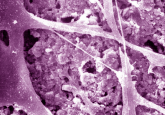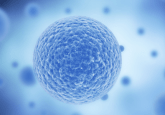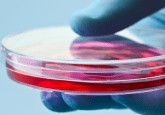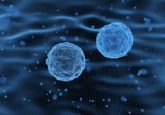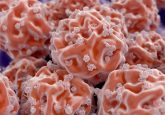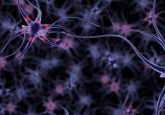Stem cell-coated biomaterial speeds up fracture repair
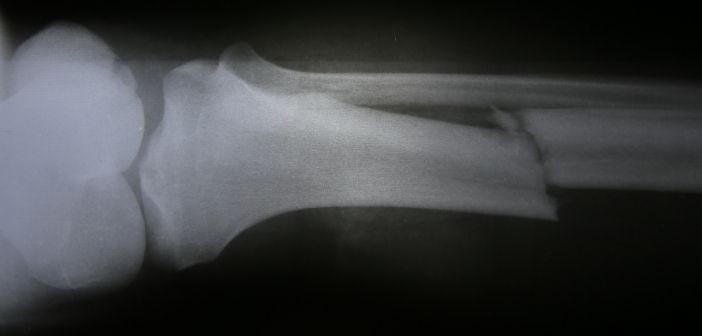
Scientists at King’s College London (UK) have developed a bandage-like biomaterial that enables the transplantation of bone-forming stem cells directly into bone fractures, dramatically speeding up the healing process.
Current methods rely on the body’s own ability to heal, using synthetic implants or donor tissue from elsewhere in the body. Cell-based therapies are far more promising. However, until now, no effective method has been developed to support the long-term healing of the bone.
In this study, recently published in Nature Materials, stem cells that produce mature bone cells were grown on a biomaterial that was also coated in a growth and repair protein. This plaster-like material simulates parts of the healthy bone, and can be transplanted into the fracture to enhance and accelerate its healing process.
The breakthrough could lead to fewer complications and infections in serious bone fractures.
“Our technology is the first to engineer a bone-like tissue from human bone stem cells in the lab within one week, and successfully transplant it in the bone defect to initiate and accelerate bone repair,” explained Shukry Habib (King’s College London).
The novel method could drastically decrease the recovery time for serious bone fractures – a development that is incredibly significant for vulnerable patients, where the healing process is typically slow.
What’s more, the ‘bone-like bandages’ can be absorbed by the body once the bone has healed, increasing the bandages’ safety in a clinical setting.
The team now hope to move their bone bandage into clinical trials and eventually use this method to heal other organs and tissues.
“The concept of the 3D-engineered tissue and the bandage has the potential to be developed to different injured tissues and organs,” Habib concluded.
Sources: Okuchi Y, Reeves J, Seng Ng S et al. Wnt-modified materials mediate asymmetric stem cell division to direct human osteogenic tissue formation for bone repair. Nat. Mater. doi:10.1038/s41563-020-0786-5 (2020); www.kcl.ac.uk/news/bandage-developed-to-rebuild-broken-bone
